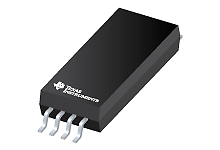SBAA527 August 2021 AMC1400 , AMC1400-Q1 , AMC1411 , AMC1411-Q1
1 Application Brief
Several industrial systems such as motor drives, solar and wind power inverters, and automotive systems such as traction inverters require accurate voltage and current measurements at high common-mode voltages. The operating working voltages in these systems are going increasingly higher to increase output power, overall efficiency and reduce cost. Higher DC bus voltages enable higher power ratings without increasing current levels, which keeps copper costs the same. This helps reduce the per-unit cost of energy generated. Another bonus of higher voltage is increased efficiency because the total power output can increase with higher voltage, but when current does not change, the conduction losses also remain the same.
In photovoltaic systems (PV), there is a trend in upgrading designs from 1000 V DC voltages to 1500 V DC voltages to reap the benefits elaborated by increased operating voltages. There are regulatory safety standards such as IEC 62109-2 in photovoltaic systems to address potential electrical hazards associated with the increased voltage.
In motor drive (MD) systems, IEC61800-5-1 is used to address the potential electrical hazards. Higher voltage grids such as 690 VAC are more cost effective to install and operate for high-power applications, therefore, they are commonly found in high-power industrial environments.
In welding equipments for industrial and professional use, IEC 60974-1 specifies the safety and performance requirements of the supply and welding circuit to protect against electric shock.
In electric vehicles (EVs), there is a strong trend to increase electric vehicle battery voltage to lower system weight, reduce charging time and increase range.
Need for High-Creepage and High-Clearance Products
While designing these systems, the engineers need to consider the relevant regulatory safety standards and several requirements such as working and transient voltages, pollution degree, and altitudes to define the minimum creepage and clearance requirements.
Most reinforced isolated amplifiers come in a SOIC package with less than 9 mm of clearance and creepage specification. Improved and wider packages prevent degradation along the package surface and arcing through the air between pins, which ensures isolation quality. Systems with working voltages greater than 1000 VRMS, impulse voltage requirements greater than 8000 V, or systems designed for altitudes greater than 2000 m or for a pollution degree 2 or higher, may require clearance and creepage distances greater than 9 mm depending on the overvoltage category of the designed system.
Introducing AMC1411 and AMC1400 in Stretched SOIC (DWL) Package
To address the requirements for higher creepage and clearances, Texas Instrument’s released a family of high-performance reinforced isolated amplifiers, AMC1411 (Figure 1-1) and AMC1400 (Figure 1-2).
These products come in a stretched SOIC (DWL) package (Figure 1-3) with clearance of ≥14.7 mm and creepage of ≥15.7 mm and are specifically designed for use in high-voltage, high-altitude and high-pollution degree environments.
 Figure 1-3 DWL Package, 8-Pin
SOIC
Figure 1-3 DWL Package, 8-Pin
SOICAMC1411 and AMC1400 offer 10600-VPK reinforced isolation per DIN VDE V 0884-11 (VIOTM) and 7500-VRMS isolation for 1 minute per UL1577 (VISO). The high isolation voltage rating and high common-mode transient immunity (CMTI) of 100 kV/µs ensure reliable and accurate operation even in harsh industrial and automotive environments.
The 0-2 V input voltage range, high input impedance, low input bias current, excellent accuracy, and low temperature drift make the AMC1411 a high-performance solution for isolated voltage sensing.
The ±250 mV input voltage range, very low nonlinearity, and temperature drift make the AMC1400 a high-performance solution for isolated shunt-based current sensing.
AMC1411 and AMC1400 in Motor Drives
Figure 1-4 shows a 3-phase motor-drive application that uses the AMC1411 to monitor DC-link voltage and AMC1400 to monitor the in-phase motor current per phase.
AMC1411 is used to measure the DC-link voltage divided down to an approximate 2 V level across the bottom resistor of a high-impedance resistive divider. The output of the AMC1411 is a differential analog output voltage of the same value as the input voltage but is galvanically isolated from the high-side by a reinforced isolation barrier.
AMC1400 is used to measure the in-phase motor current by sensing the voltage drop across the in-phase shunt to the motor.
Additional Resources
- Learn more about isolated amplifiers and modulators in our video training series.
- Read these white papers:
- Read the application brief, Accuracy Comparison of Isolated Shunt and Closed-Loop Current Sensing.